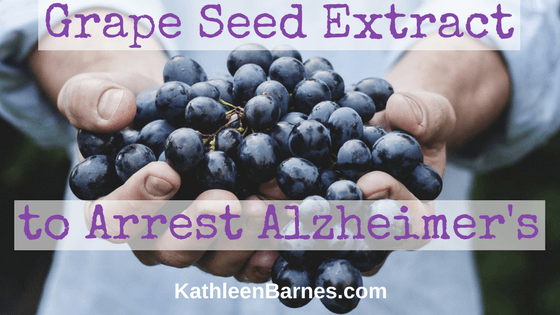<<< Click the book cover to find out more.
We were talking about diabetes in the last chapter, and before we entirely leave there, it’s important to know that Alzheimer’s disease has sometimes been called “diabetes of the brain.”
Even in the earliest stages of the devastating memory-destroying disease, the brain’s ability to metabolize sugar is diminished. For decades, science has concluded that the characteristic amyloid plaques and tangles in the brains of Alzheimer’s sufferers interrupt the delicate circuitry of thought transmission and memory.
The characteristic beta-amyloid clusters of proteins called “plaques” and clumps of dead and dying nerve and brain cells, called “tangles” are the generally agreed upon indicators that Alzheimer’s disease exists.
Think of the brain’s network of dendrites and neurons as an electrical system. Those plaques and tangles block the transmission of the electrical current or information through those circuits.
What’s the link?
Many scientists now call Alzheimer’s “type 3 diabetes.” What’s the link between Alzheimer’s and diabetes?
Here are some things that science has proven in recent years that have advanced our understanding of this terrible disease:
- We know that the risk of Alzheimer’s is doubled in people with diabetes. Some studies say the risk is four-fold.
- We also know that insulin resistance defines Type 2 diabetes, sometimes called “diabesity,” is primarily caused by eating too many simple carbs and sugars and not enough fat.
- We also know that insulin resistance starts the brain damage cascade.
- We also know that people with metabolic syndrome are at higher risk of pre-dementia and mild cognitive impairment.
- We also know that diabetes and Alzheimer’s have parallel underlying causes: impaired insulin signaling, uncontrolled glucose mechanism, oxidative stress, abnormal protein processing, and the stimulation of inflammatory pathways.
- Finally, we know that the increasing and dramatic prevalence of Alzheimer’s, diabetes, and obesity have been pretty much in lockstep since 1980.
Does any of this sound familiar? Inflammation? Insulin resistance? Oxidative stress? We’ve talked about this in early chapters and we’ll re-visit these subjects again and again in the coming chapters. At least one of these triggers is the underlying cause of virtually every disease we’ll discuss in this book. Not surprisingly, grape seed extract powerfully addresses all of them.
Please re-read Chapter 4 on metabolic syndrome, obesity, and diabetes and apply all of the filters of what you’ve just learned about Alzheimer’s disease to the science I’ve laid out here. You’ll also see that grape seed extract addresses the underlying causes of the terrible Trio that now can be called the Fearful Foursome.
Grim statistics
The Alzheimer’s statistics are grim. Alzheimer’s and dementia cruelly rob the memories of 10 percent of 65 year olds, 25 percent of 75 year olds, and 50 percent of 85 year olds. It’s now the seventh leading cause of death worldwide and researchers predict it will affect 106 million people by the year 2025. By the year 2050, the Alzheimer’s Association reports, the number of people 65 and older with Alzheimer’s will triple.
Patti Reagan, the daughter of President Ronald Reagan, coined the term “The Long Goodbye” in her 2011 book of the same title about her father’s long battle against Alzheimer’s.
It is a long and painful goodbye that takes a terrible toll on families. The average patient lives 10 years or more after diagnosis, growing more and more distant until the body still lives, but the mind is long gone. Only a shell of the loved one remains.
Yes, a small percentage of Alzheimer’s is genetic, but I believe that most Alzheimer’s is a lifestyle disease, just like diabetes. Control the symptoms of metabolic syndrome and you not only prevent diabetes and heart disease, in many cases, you can also prevent Alzheimer’s.
Alzheimer’s is considered incurable and irreversible. That may be true, but I’d rather dwell on the idea that Alzheimer’s is preventable and that once someone has begun to slide down the slippery slope of memory loss, the deterioration can be slowed or even stopped.
Oxidation and inflammation
Since the late 1980s, research has handed out little hints that chronic inflammation hastens the Alzheimer’s disease process and there are even some hints that inflammation may cause Alzheimer’s.
There is no doubt that inflammation is an important factor in Alzheimer’s, so it stands to reason that controlling inflammation will reduce the risk of developing the disease.
The same logic applies to oxidative stress from free radical damage.
Free radicals are the culprits in a number of biochemical processes that contribute to Alzheimer’s, including the formation of advanced glycation end products (AGEs mentioned in Chapter 4), nitration or the constriction of blood vessels because of insufficient nitric oxide, and the accumulation of harmful fats in the bloodstream known as lipid peroxidation.
The above is a pretty fancy way of saying that free radicals certainly play a role in Alzheimer’s.
Of course, antioxidants neutralize free radicals and even reverse the damage they cause. And you already know from Chapter 1, that grape seed extract is the most potent antioxidant known to science.
Addressing Alzheimer’s and its underlying causes
Grape seed OPCs are at the cutting edge of Alzheimer’s research.
Research shows that grape seed OPCs:
- protect delicate brain circuitry to keep the “electrical” information flowing properly
- reduce the effects of oxidative stress (free radical damage) in the aging brain
- reduce inflammation in the brain
- protect nerve cells to prevent memory loss
- lower blood glucose to protect brain cells
A pivotal 2010 review of Alzheimer’s research on grape seed extract from the Mount Sinai School of Medicine shows that grape seed extract stops the formation of those beta-amyloid plaques and tangles characteristic of Alzheimer’s.
Probably the most exciting result of these studies is the confirmation that grape seed extract actually contributes to brain plasticity, the ability of the brain to adapt and create new neural pathways, effectively bypassing obstructions and damaged tissue.
Purdue University noted an interesting pattern: It seems that grape seed extract becomes more effective the longer you take it. The blood and brain levels of catechins and epicatechins, components of OPCs, were detectable as soon as someone took it, but they increased by as much as 282% over time with repeated doses.
Australian researchers found that lab animals given grape seed extract had as much as 44% less brain inflammation and 70% fewer plaques and tangles than animals that did not receive the grape seed OPCs.
To read the whole story of French Grape Seed extract and its profound effects on heart disease and other chronic diseases, look for the book on Amazon.








